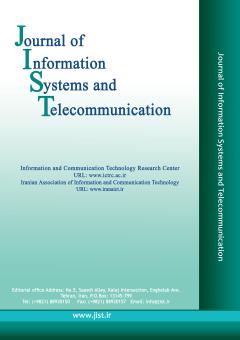Simulation Based Economical Approach for Detecting Heart Disease Earlier from ECG Data
Subject Areas : Communication Systems & Devices
Md. Obaidur Rahaman
1
*
![]() ,
Mohammod Abul Kashem
2
,
Sovon Chakraborty
3
,
Shakib Mahmud Dipto
4
,
Mohammod Abul Kashem
2
,
Sovon Chakraborty
3
,
Shakib Mahmud Dipto
4
1 - Department of Computer Science and Engineering, Faculty of Electrical and Electronic Engineering, Dhaka University of Engineering and Technology, Dhaka, Bangladesh
2 - Department of Computer Science and Engineering, Faculty of Electrical and Electronic Engineering, Dhaka University of Engineering and Technology, Dhaka, Bangladesh
3 - Department of Computer Science,Old Dominion University, Norfolk, Virginia, USA
4 - Department of Computer Science,Old Dominion University, Norfolk, Virginia, USA
Keywords: Artificial Neural Network (ANN), Cardiovascular D isease, Electrocardiogram, Heart Disease, Modulation Techniques, MQTT Server,
Abstract :
Cardiovascular diseases present significant challenges to public health in developing countries. The high costs of traditional treatments and the limited availability of specialized medical equipment contribute to these challenges. Current diagnostic methods often rely on specific electrocardiogram (ECG) parameters, which may not capture the nuanced complexities necessary for accurate diagnosis. To address these issues, our study proposes an innovative solution: an accessible and cost-effective ECG monitoring system. This system not only captures electrical signals from the heart but also translates them into numerical values using advanced modulation techniques. A trained deep learning model then analyzes this data to accurately identify any potential complications or confirm a healthy cardiac state. Our approach also allows for remote diagnosis and treatment. By utilizing an MQTT server, ECG data can be efficiently transmitted to experts for evaluation and intervention when necessary. Our meticulously fine-tuned Artificial Neural Network (ANN) architecture has achieved an impressive accuracy of 95.64%, surpassing existing methodologies in this field. Designed with resource-strapped regions in mind, our system offers a lifeline to rural areas lacking access to medical professionals and advanced equipment. Its affordability ensures that even individuals with limited financial means can benefit from timely and accurate cardiac monitoring, potentially saving lives and reducing the burden of cardiovascular diseases in underprivileged communities.

